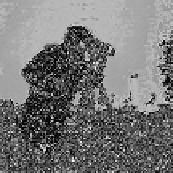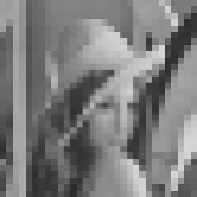Image Processing Reference
In-Depth Information
1
4
7
161
139
161
2
5
8
78
80
152
3
6
9
66
116
114
FIGURE 8.1: An image and its 9 average gray levels subimages
Perceptual Indiscernibility Relation
(Peters, 2010)
DEFINITION 8.2
Let
O,
F
be a perceptual system. Let
φ ∈B
,
x, y ∈ O
and let
φ
B
(
x
)=(
φ
1
(
x
)
,...,φ
i
(
x
)
,...,φ
L
(
x
))
denote a description of object x containing feature values represented by
φ
i
∈B
.A
perceptual indiscernibility relation
∼
B
is defined relative to
B
as follows
∼
B
=
{
(
x, y
)
∈ O × O |
φ
B
(
x
)
−
φ
B
(
y
)
2
=0
},
(8.2)
where
·
2
denotes the
L
2
(Euclidean) norm. The set of all perceptual objects in
O
that are indiscernible relative to an object
x ∈ O
is called an
equivalence class
,
denoted by
x
/∼
B
. This form of indiscernibility relation introduced in (Peters, 2009)
is a variation of the very useful relation introduced by Z. Pawlak in 1981 (Pawlak,
1981a). Note that all of the elements in
x
/∼
B
have matching descriptions,
i.e.
, the
objects in
x
/∼
B
are indiscernible from each other. Then, by definition,
FIGURE 8.2: An example of an image partitioned into 961 subimages
∀x ∈ O,
x
/∼
B
=
{y ∈ O | y ∼
B
x}.
(8.3)
The indiscernibility relation partitions the set
O
to form the quotient set
O
/∼
B
,a
set of
x
/∼
B
.







Search WWH ::

Custom Search